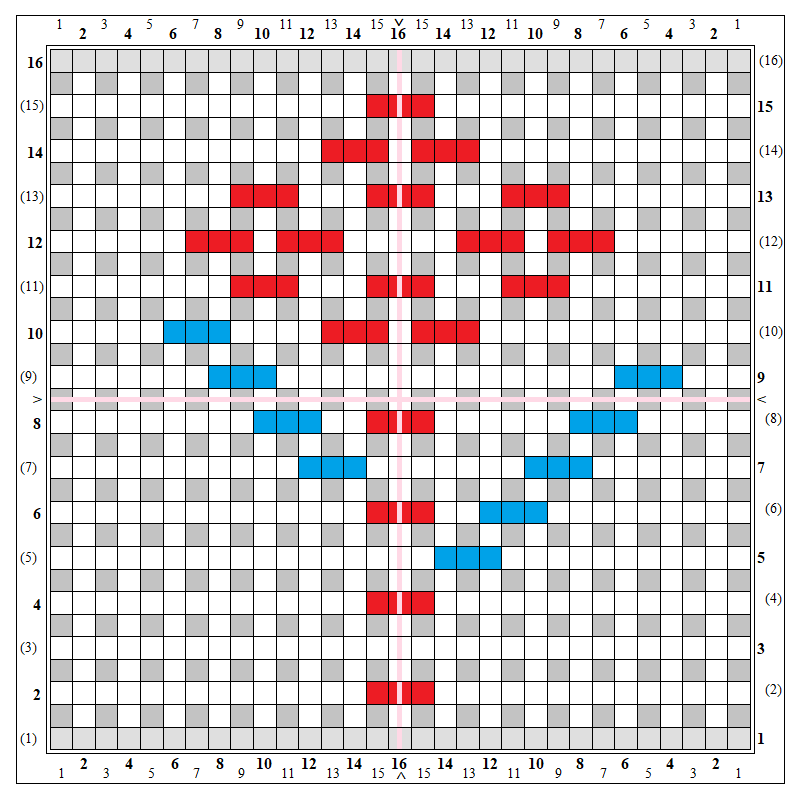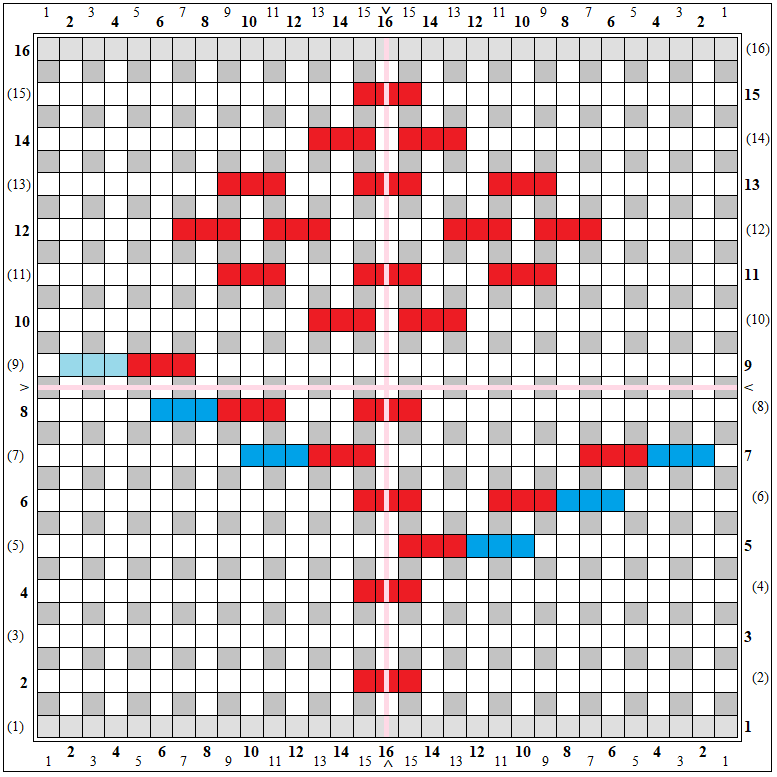Since people are starting to receive their Wunderwag pin loom sets, I figured I’d better get busy designing some patterns for that size. Actually a lot of the 4″ textural patterns can be woven on the 6″, but not all. For example, “Horizontal Xs” doesn’t work on the 6″ loom without modification. It has to do with the number of pins. I’m truly out of my depth here with the terminology. Some patterns are divisible by 4 and some by 2. The 2s work on the 2″, 4″, and 6″ loom, but not the 4s. 4s work on the 4″, 8″, 12″, etc.
Flower 1
L1-3: CSS “Watermelon”
L4: YBSS “Olive”
R1: P
R2: P14, U3, P14
R3: P
R4: Rpt R2
R5: P11, O3, P17
R6: P14, U3, P2, O3, P9
R7: (P7, O3) x 2, P11
R8: P9, O3, P2, U3, P6, O3, P5
R9: P3, O3, P15, O3, P7
R10: P5, O3, P4, U3, O1, U3, P12
R11: P8, (U3, P3) x 2, U3, P8
R12: P6, U3, O1, U3, P5, U3, O1, U3, P6
R13: Rpt R11
R14: P12, U3, O1, U3, P12
R15: Rpt R2
R16: P
This version of the pattern is appropriate for this warping configuration (L1-3/L4). If using a single color, you may also use this rewritten version or the one just below.
Flower 2 (single color version)
No Sample
R1: P
R2: P14, U3, P14
R3: P
R4: Rpt R2
R5: P9, O3, U3, P16
R6: P14, U3, P3, U3, O3, P5
R7: U1, O3, U3, P9, U3, O3, P9
R8: P5, O3, U3, P3, U3, P14
R9: P24, U3, P4
R10: P12, U3, O1, U3, P12
R11: P8, (U3, P3) x 2, U3, P8
R12: P6, U3, O1, U3, P5, U3, O1, U3, P6
R13: Rpt R11
R14: Rpt R10
R15: Rpt R2
R16: P
Thought I’d better release the privacy setting on this post first because you’ll need these instructions for some of the patterns you’ll soon run across. THIS IS AN ADVANCED TECHNIQUE, so beginners might find it confusing—anyone might find it confusing, but go on, give it a try. To find other L2M patterns, just type L2M in the Search box.
For a very simple L2M of the Hourglass pattern, see this blog post.
Layer 2 Manipulation, or L2M
As a pattern weave designer I’m frequently frustrated by my inability to use the three-layer warping method and end up with a design that’s centered on the square. Anything symmetrical, it seemed, always presented the same problem: rows 8 and 9 couldn’t repeat each other (unless they were plain weave rows) without creating a gap in the final figure (see “Hourglass Pattern“).
I discovered that a simple trick of manipulating one strand on L2 took care of this problem. It also created new problems, but I’ve dealt with those as they’ve come up.
For this sample, we’ll be weaving “Farewell Maggie” version 1. (Named in honor of my Maggie‘s passing the day I began work on this pattern.)





